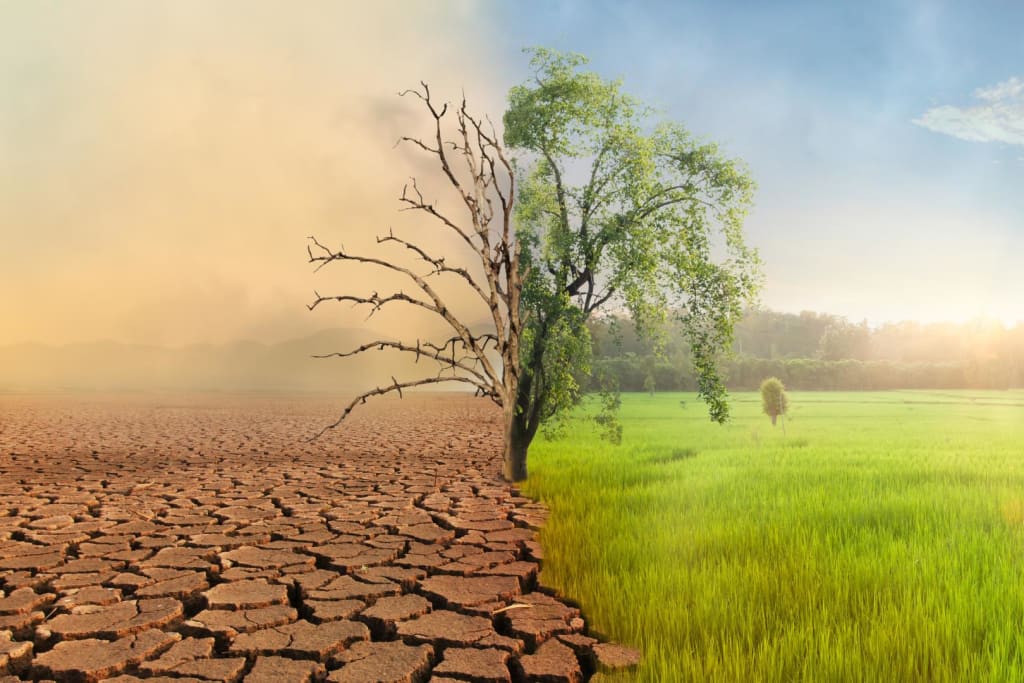CLIMATE CHANGE
The Biggest Myth About Climate Change

If one has spent any time discussing climate change on the internet, they may have come across comments that suggest that climate change is natural, citing the existence of Ice Ages and palm trees on Antarctica as evidence. However, it is important to recognize that each individual has their own unique level of education and experience, and misconceptions or failures of understanding are often the result of circumstances beyond their control. Therefore, it is important to approach these comments as a teaching moment, an opportunity to reduce ignorance and expand enlightenment.
It is a fact that natural forces have influenced climate change throughout Earth's history, and continue to do so today. Climate scientists are aware of these natural cycles and have discovered most of them. Every climate model used by climate scientists today factors in the effects of these natural forces. However, even with all of these natural ways to change the climate included, the only way to get climate models to come close to what is actually happening is to add in all the human activities that are affecting the climate.
Earth's climate is a complex system, but the part that is most relevant to us is temperature. Temperature is a measure of how fast something's atoms are moving, and it is influenced by the energy that enters and leaves Earth's system. The sun is the source of all the energy that enters Earth's system, and the amount of energy that Earth absorbs and releases is influenced by natural forces such as volcanic eruptions and the sun's cycles. However, the addition of greenhouse gases to the atmosphere is causing Earth to absorb more energy than it is releasing, resulting in excess heat energy that is heating up the planet.
In conclusion, while natural forces have influenced climate change throughout Earth's history, the current rapid global warming cannot be explained by natural cycles alone. It is the result of human activities that are adding greenhouse gases to the atmosphere, causing Earth to absorb more energy than it is releasing. It is important to recognize the role that humans are playing in climate change and take action to reduce our impact on the planet.Both of these phenomena have the potential to increase the amount of solar radiation that is reflected back into space. This can occur through the seeding of clouds, which act as reflectors of bright sunlight, or through the direct reflection of sunlight off tiny aerosols of ash or sulfur compounds. Volcanic ash and sulfur have been found to cause Earth to absorb less energy than it loses, resulting in an overall cooling effect that can last for several decades. However, this is a well-understood climate process, and the rate of volcanic eruptions today is similar to that which has occurred throughout human history. Therefore, it cannot be attributed to recent warming trends.
Volcanoes can also have an impact on climate through the release of enormous amounts of carbon dioxide, a greenhouse gas. This CO2 is primarily derived from rocks that are recycled back into magma through plate tectonics, releasing carbon into the atmosphere during eruptions. While volcanic eruptions can release significant amounts of CO2, they are not responsible for modern warming trends. Large-scale volcanic events that have significantly impacted Earth's energy budget occurred over tens to hundreds of thousands of years, and volcanic CO2 cannot explain recent warming.
Other natural processes, such as short-term climate cycles like the El Nino-Southern Oscillation, have been found to have a negligible impact on recent warming trends. The oceans have absorbed the majority of the extra heat energy added to Earth's budget, slowing down the heating of the planet. However, this has resulted in negative consequences for the oceans themselves.
Changes in Earth's position relative to the sun, known as Milankovitch cycles, can have a significant impact on Earth's long-term climate. These cycles include variations in the shape of Earth's orbit, the angle of Earth's axis, and the precession of Earth's axis. While these cycles have been found to trigger the beginning and end of recent Ice Ages, they cannot explain recent warming trends.
Overall, while there are several natural forces that can influence the climate, none of them can fully explain recent warming trends.When forested areas are cleared, the land may become lighter in color and absorb less heat. This phenomenon is well-known to scientists who have studied the natural cycles and factors that influence the climate. These effects have been factored into modern climate models, which demonstrate that human activities are the primary cause of modern climate change. The excess greenhouse gases that humans have released into the atmosphere since the Industrial Revolution can be traced back to fossil fuels, as evidenced by the ratios of different isotopes of carbon in the atmosphere's CO2. While some may attempt to deny the reality of climate change, the overwhelming majority of Americans understand that it is happening and that it is mostly human-caused. It is important to remember that we have the power to be the solution to this problem, and that we must take action to address it. PBS's "America Outdoors: Understory" with Baratunde Thurston is a new show that explores our relationship with the natural world and offers insights into how we can combat climate change.






Comments
There are no comments for this story
Be the first to respond and start the conversation.